DEVOA Daisuke Nishida Talks About Another Source of Creation
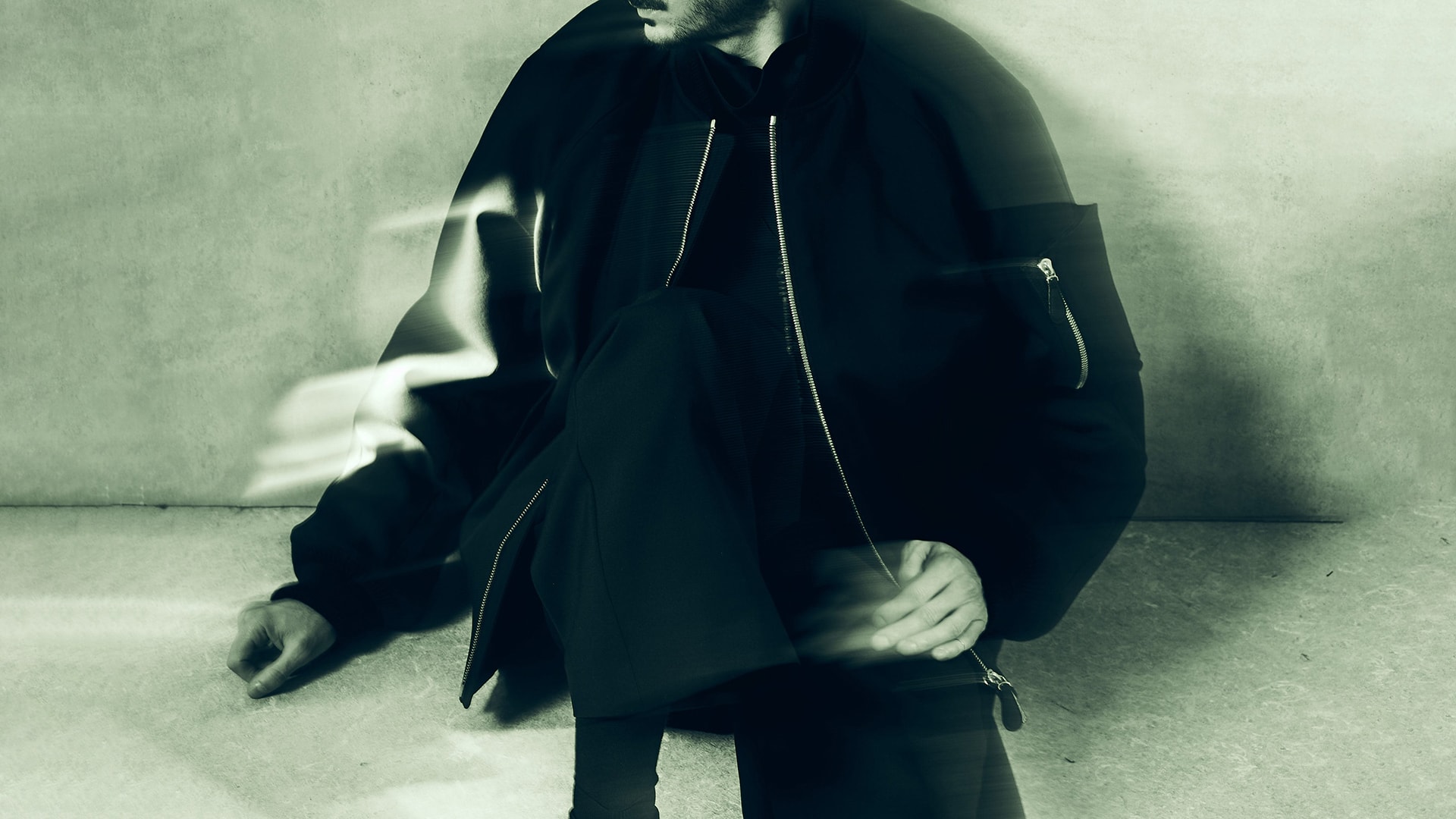
Why did Daisuke Nishida, despite already having an established brand with a firmly rooted worldview in DEVOA, decide to launch CROMAGNON? The answer lies in his philosophy of beauty found not in perfection, but in the allure of the “unfinished.” “If DEVOA is Homo sapiens, then CROMAGNON is what came before it.” In this interview, Nishida reveals the true meaning behind these words. This article delves into the very core of the brand, a departure from the anatomical concept that defined DEVOA, toward a freer, more primal form of creation.

After studying human anatomy and medicine, he taught himself pattern making. He founded DEVOA in 2007. Based on his own experiences and knowledge of anatomy, he pursues his own unique pattern making. He creates artisanal garments that combine comfort that does not stress the body with sculptural beauty.
His high-quality craftsmanship, which is meticulously detailed from material development, has attracted an enthusiastic following of core fashion fans in Japan and abroad.
Liberation from “Completion.” What Separates DEVOA from CROMAGNON
To begin, could you tell us about how CROMAGNON started, and how it differs from DEVOA?
The idea for CROMAGNON has actually been around for many years. With DEVOA continuing for so long, for better or worse, I felt that a very strong image had been established in the minds of customers. For example, the concept of “anatomical,” which has become synonymous with the brand.
Of course, as a creator, that is an honor. However, it is also true that at times, that “DEVOA-ness” felt like an unconscious form of “constraint.”
So CROMAGNON was born from a desire for liberation from those constraints?
Yes, exactly. I wanted to be completely free from the unspoken rules of “DEVOA wouldn’t do this” or “this doesn’t feel like DEVOA.” That is the essence of the sense of “freedom” in CROMAGNON.
The advanced techniques and philosophy of craftsmanship cultivated through DEVOA remain unchanged. But the “purpose” and the “form of expression” to which they are directed are completely stripped away. That is what I consider to be a “blank state.”
The techniques and philosophy cultivated in DEVOA remain the same, but with no predetermined direction. That is my idea of a “blank state.”
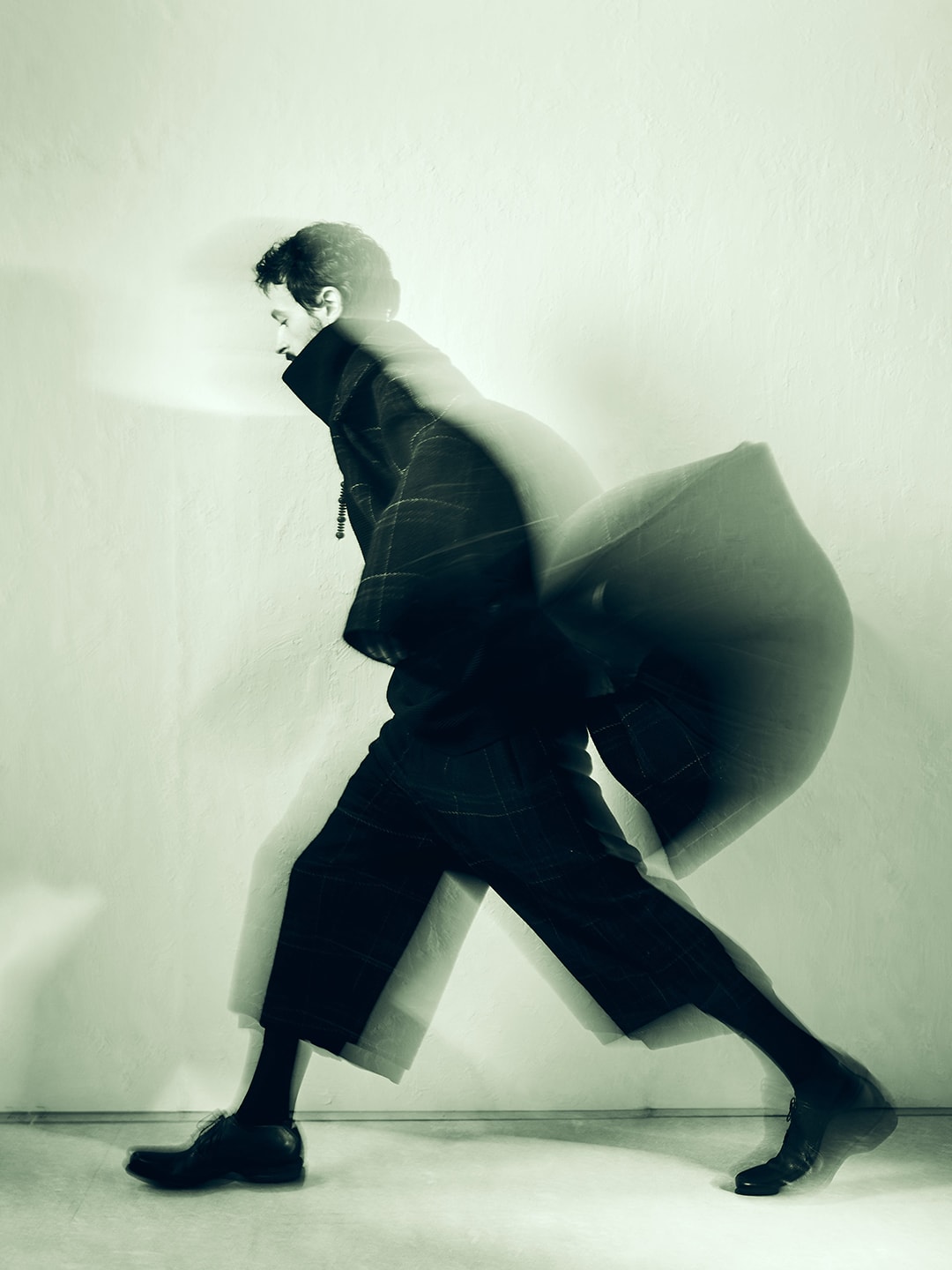
So rather than resetting your skills and experience, it’s about freeing the way you use them. How does that translate into actual expression?
Exactly. That’s why CROMAGNON has no fixed image of “this is how it should be.” For example, elements like “cute” or “very casual,” which don’t exist in DEVOA, can be expressed here quite naturally.
However, even in those softer expressions, it’s not about showing off design in an obvious way. The attitude of deliberately hiding highly elaborate craftsmanship in unseen places is exactly the same as in DEVOA.
Also, when it comes to designs and items, I place no restrictions like “I have to make this many styles.”
With nothing binding me, I can approach creation with a different kind of joy, a different feeling than with DEVOA. That is CROMAGNON.
For example, in the next collection, I’ll be making as many as 14 different printed T-shirts, the kind you’d find in a vintage shop.
My thought was, “If someone wears DEVOA, isn’t it okay if on the weekend they wear a cute T-shirt and jeans?”
That sense of playfulness is exactly what makes CROMAGNON unique.
The “Incomplete Beauty” that Exists Before Homo Sapiens
To begin with, could you tell us about the origin of the name CROMAGNON?
Cro-Magnon people are said to be one step before Homo sapiens, but in fact, the exact process of evolution is not clearly understood. I found that ambiguity fascinating. The idea of a being that exists just before fully evolved Homo sapiens, that held a certain allure for me. For me, the sense of “incomplete beauty” felt very natural.
Apart from the appeal of something “complete,” what is it about the state just before completion that particularly draws you in?
Yes. “Completion” also means that there will be no further change. What draws me so strongly to the state before completion is that I see within it infinite “possibility” and a kind of “margin” that leaves space unsaid. If I were to put that feeling into words, it might be close to the Japanese concept of “wabi-sabi.” Or the aesthetics of “margin,” where the final touch is deliberately left to the wearer instead of being overly constructed. A sense of cherishing the “possibility” of the garment changing along with the wearer over time. …That is what I would say it is.
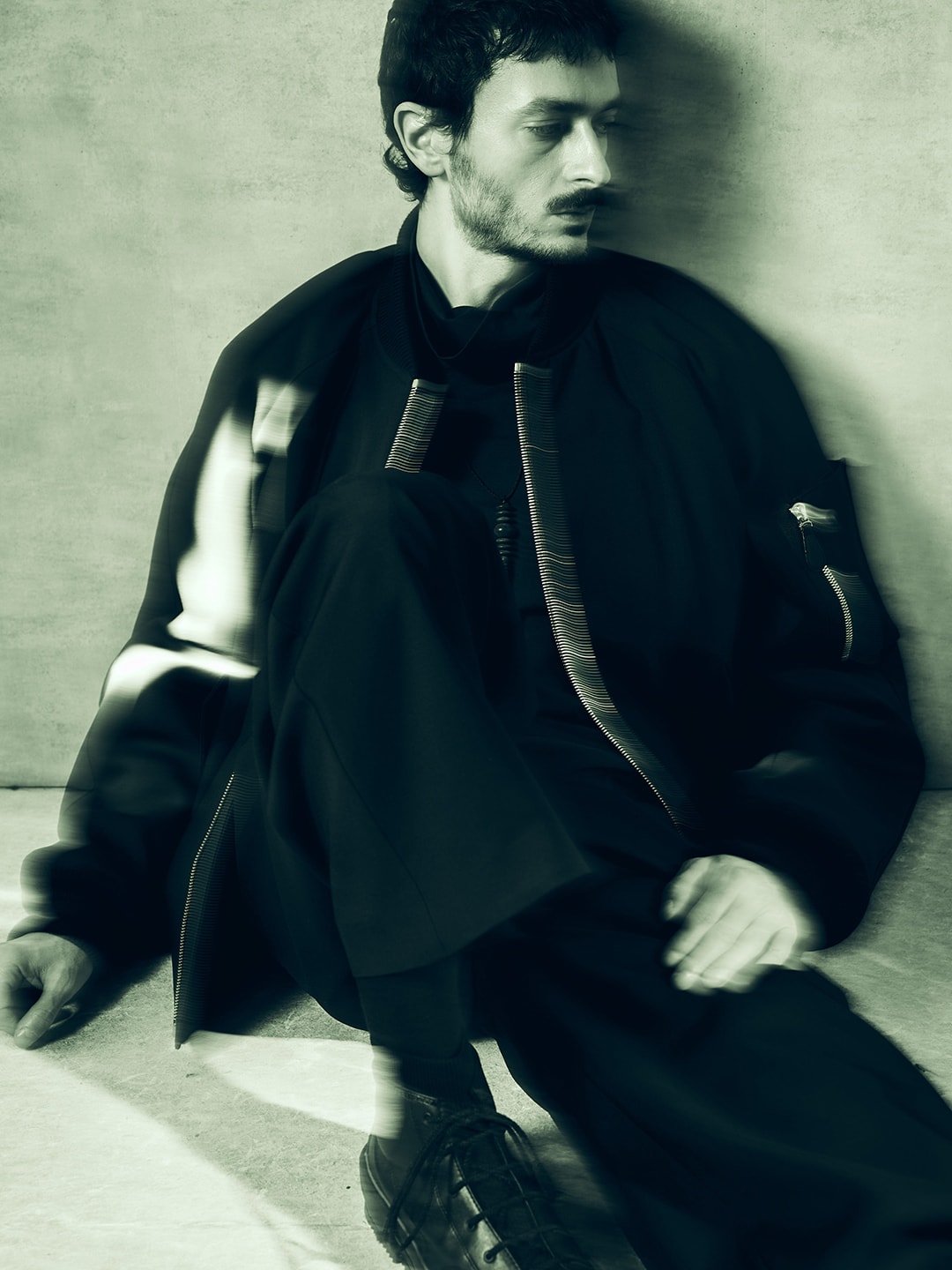
What draws me to the state before completion is that I find within it the “margin” entrusted to the wearer, and the “possibility” of change over time.
Listening to you, it seems that DEVOA and CROMAGNON also differ in how they perceive time.
That’s right. DEVOA is a brand that strongly reflects my personal way of thinking and history, almost as a “culmination of the past.” For example, like the taping theory that came from my experience with wrestling in the past, my own life’s footprints are built into its structures. That is why, to me, it is a kind of “completed form.” By contrast, CROMAGNON can perhaps be described as a vessel to express, with honesty, “the feeling of this very moment, the ‘now’.”
With the removal of the anatomical concept that forms the core of DEVOA, what kind of changes have emerged?
Yes, there’s been a very interesting change. Simply by removing that element, the response from women improves noticeably. Even though the person creating the pieces, the way the fabrics are made, and the attitude of hiding elaborate craftsmanship in unseen places, all of that remains unchanged. And yet, a different side, unlike the masculine strength of DEVOA, seems to naturally come through.
Fabrics that Tell Stories. Encounters by Chance and an Unwavering Path of Pursuit
This season’s collection left a strong impression through each fabric. To begin, could you tell us how you came to adopt this distinctive Indian fabric with its unique texture?
That story began completely by chance. One day, I received an enthusiastic offer via Instagram from an Indian fabric manufacturer. At first, I was skeptical, but they insisted, so I had them come to my atelier, and that’s how it started. When I actually saw the fabric, it carried a kind of “warmth” that only handwork can produce. To be honest, their work was also very loose in parts (laughs). But even so, the finished fabric had an irregularity and atmosphere, in a good sense—that Japanese machines could never create. I thought it was fascinating, so I decided to experiment with using it in CROMAGNON.
What was it about that fabric that felt “CROMAGNON-like” to you?
Since their fabric is handwoven, it can only be produced in short panels of 3 or 4 meters. Production efficiency is not good at all. But that’s exactly why I thought, “Ah, this feels very Cro-Magnon.” It’s so incomplete, isn’t it? And yet, within that, there is undeniable beauty. It overlapped perfectly with the philosophy of the brand.

That’s why I thought, this feels very Cro-Magnon. It’s so incomplete, isn’t it? And yet, within that, there is undeniable beauty.
On the other hand, this checked fabric here has a softer atmosphere not often seen in DEVOA.
That’s right. The raw materials are the same as those used in DEVOA, but I selected a chic color combination of bordeaux, navy, and beige that feels “cute.” In DEVOA, I deliberately avoid the expression of “cuteness.” Being able to incorporate this kind of straightforward playfulness is one of the unique charms of CROMAGNON.

I’ve also heard that the staple wool gabardine is a special fabric from Bishu.
Yes. This gabardine is produced at a weaving mill that has been making fabrics for renowned maison brands since the 1980s. What I particularly focus on is the black hue. I custom-order the darkest shade, a black with a reddish tint.
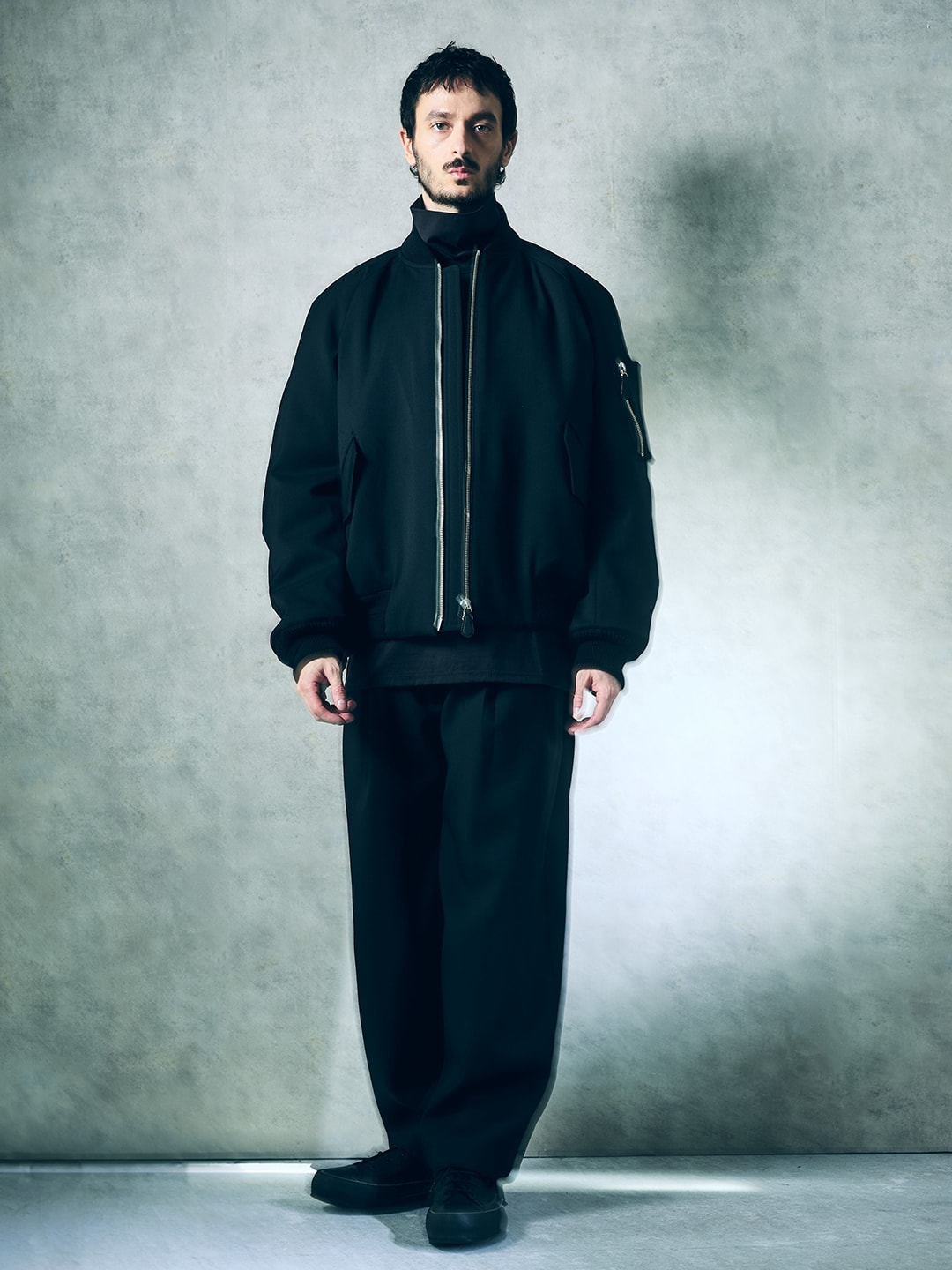
By the way, do you always communicate directly with fabric manufacturers, without going through trading companies, for both DEVOA and CROMAGNON?
Yes, I personally think of that as normal, but apparently, it’s the minority approach. Still, to reflect my thoughts in everything, from selecting the yarn, to the weave, to the details of processing, direct dialogue with the makers is absolutely essential. If you were only considering efficiency or cost, there would surely be simpler ways. At times, arranging everything from scratch can even end up costing more than just buying the fabric outright. But even so, to truly achieve what I want to do, this is the only way. The free-spirited creativity of CROMAGNON, and the precise construction of DEVOA, both are founded upon this unwavering stance.
A Flat Way of Thinking That Creates Softness and Effortless Ease
CROMAGNON clothing clearly carries a unique sense of “ease” and “softness” that feels different from DEVOA. Does this come from the way you approach silhouettes and patterns?
Yes, I create with a completely different approach from DEVOA, deliberately so. What I aim for with CROMAGNON is clothing that allows the wearer to look relaxed, gentle, and calm. For example, the sleeve curve is cut in a way closer to vintage clothing, or I intentionally make the lapel angle a little awkward. By deliberately leaving behind a sense of “clumsiness,” I can paradoxically make the garment appear more beautiful.
How would you compare that design philosophy with DEVOA?
DEVOA’s patterns are actually not aligned directly with the human body’s structure. They are based on the body balance of insects.
Insects?
Yes. Even when two things are the same length, they can appear different due to optical illusion, right? DEVOA patterns use those illusions, by shifting the angles of curves, the placement of wrinkles, and the position of the elbow away from the actual human body, I create patterns that make the torso appear longer. That’s why I put the DEVOA figures I make into “insect boxes.”
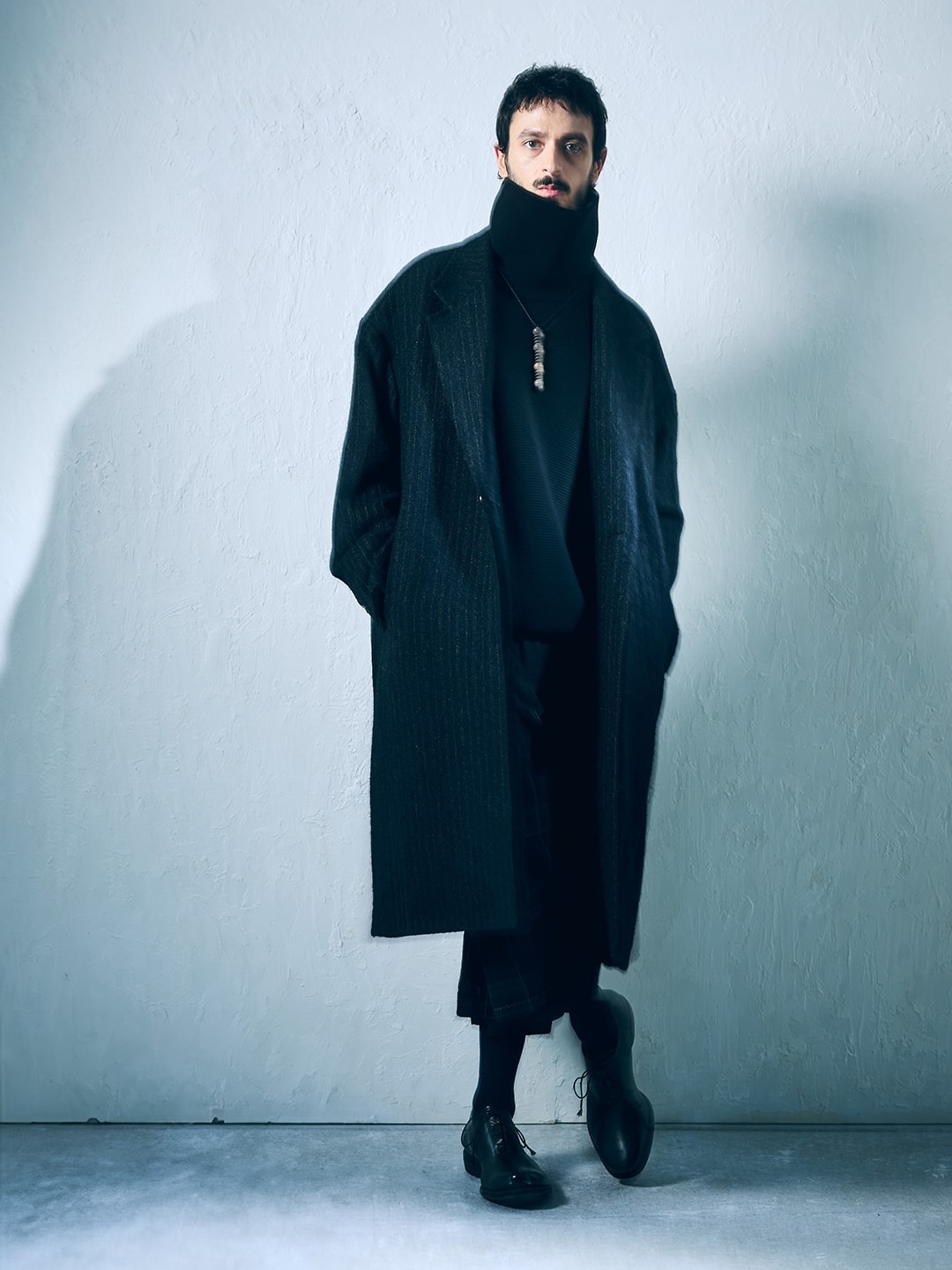
DEVOA’s patterns are not based on the human body at all—they apply the body balance of insects. In CROMAGNON, I don’t do that at all.
So you’ve completely eliminated that very complex philosophy in CROMAGNON?
Yes, I don’t do it at all. In CROMAGNON, I’ve removed those anatomical constraints and instead think more freely, more flatly. For example, the pants are a simplified reworking of cropped pants from DEVOA, with many elements stripped away and adjusted into a length that suits Asians better and matches my personal preference.
At first glance, the clothing looks very relaxed, but there’s precise calculation behind it, isn’t there?
That’s right. For instance, the patterns of CROMAGNON garments are sometimes actually constructed as giant “inverted triangles.” However, by adjusting the fabric thickness, when worn, the triangular pattern doesn’t overwhelm the design. Instead, it produces a unique “lightness,” not simply wide for the sake of being wide. How to create a sense of “ease”, that is the simple goal. But the process of getting there, in a way different from DEVOA, is very deep and complex.
Liberation from Seasons. Numbering Toward the Future
Lastly, could you tell us about the future outlook for CROMAGNON?
CROMAGNON is presented once a year and does not adopt the concept of “seasons.” The collections continue simply as “1, 2, 3...” in numbering. This is because I want to keep creating with free ideas, without being bound by the seasonal image of fashion.
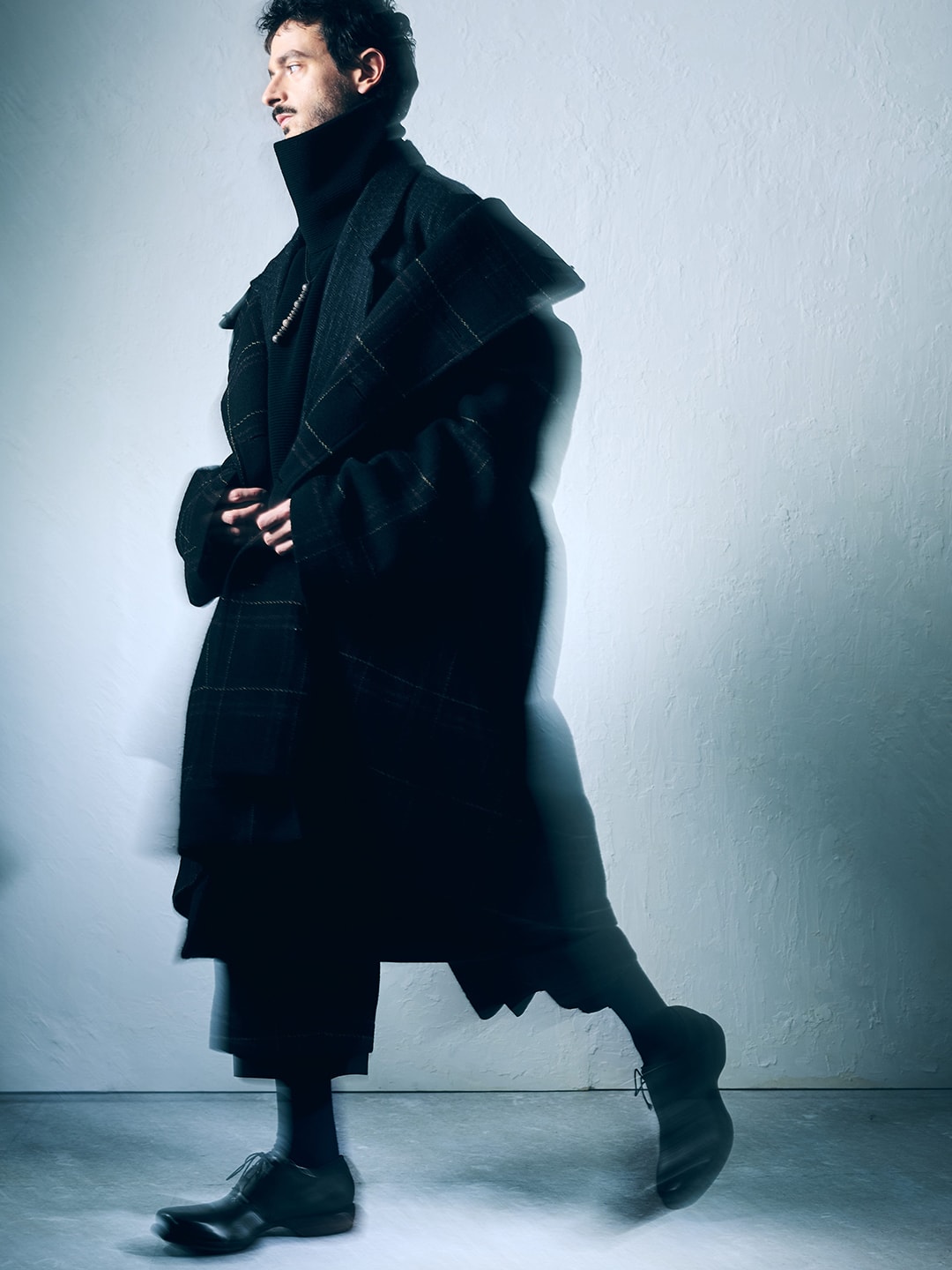
Will you also continue not setting specific themes?
Yes, I don’t want to be constrained by themes. Rather, I want to gradually evolve the existing forms while conveying the appeal of interesting fabrics I encounter at each moment. I don’t plan on doing anything flashy, but I would be happy if the brand grows into something universal,clothing that looks simple and cool no matter what era you wear it in. For me, CROMAGNON will continue to be a precious place where I can remain in a consistently flat state of mind.
Thank you very much for sharing such valuable insights over a long conversation.
About the Author
Interviewer & Text: Toru Morisaki (FASCINATE)